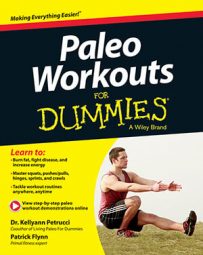Most likely, you’re familiar with the plank. If not, think of the plank as the top of the push-up position. The name is symbolic of the looked-for body position, which should be flat; the hips shouldn’t sag or pike up and neither should the belly.
The plank helps to develop linear core stability, or the ability to resist extension of the spine, which is the major function of your abs.
Here’s how to do a perfect plank:
Set up at the top of a push-up position; place your feet together and your hands directly under your shoulders.
![[Credit: Photo courtesy of Rebekah Ulmer]](https://www.dummies.com/wp-content/uploads/410951.image0.jpg) Credit: Photo courtesy of Rebekah Ulmer
Credit: Photo courtesy of Rebekah UlmerKeep your back flat at all times — no rounding or overarching — and keep everything in line, from head to tailbone.
Hold the plank position for at least 20 seconds.
To get even more out of the plank, throw in some isometric contractions: Simultaneously squeeze your butt, abs, quads, triceps — every possible muscle that you can.
Adding in these contractions not only makes the plank more challenging but also serves to keep your body parts properly and neatly ordered.

